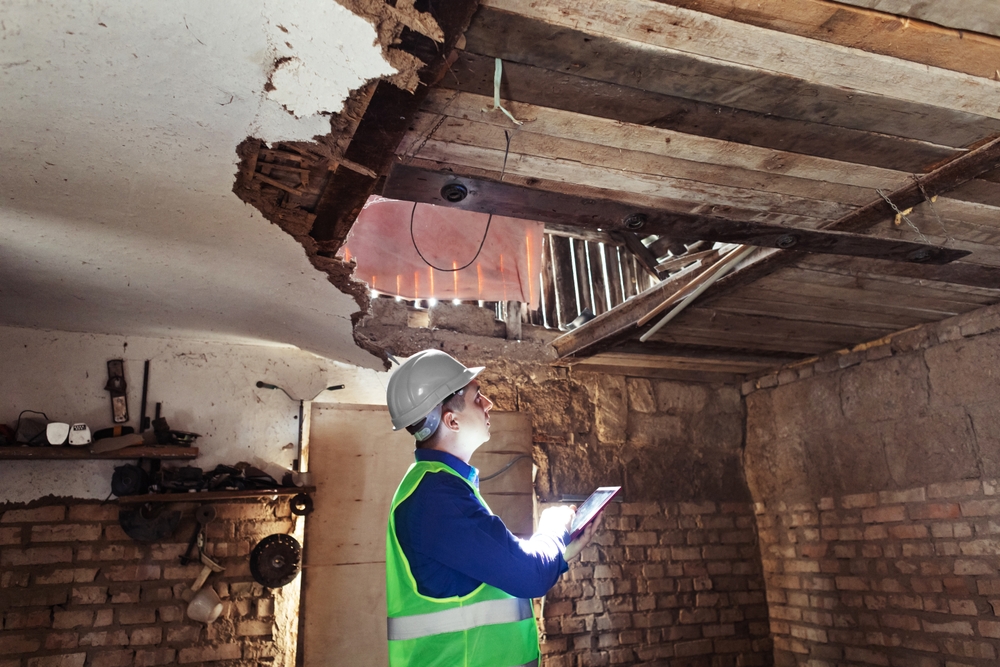A ceiling collapse accident can cause damage not only to the room where the defect occurred, but it can also lead to serious physical injuries for those who were present. Often, these types of accidents result in the need for extensive medical treatment — and you may also lose time from work as you recover. Critically, if another party’s negligence was the cause of your ceiling collapse injury, you may be able to pursue a personal injury action under the theory of premises liability to recover your economic and non-economic damages.
What are the Causes of Ceiling Collapse Accidents?
There can be many causes of a ceiling collapse accident, and a number of warning signs usually occur before such an incident happens. Whether the building is old or new, cracking, sagging, or creaking can indicate a potential hazard. If the property owner had notice that there was a dangerous condition that could foreseeably lead to a ceiling collapse, and they failed to make repairs, they could be held liable for any injuries that you sustained.
While ceiling collapse accidents typically arise due to a property owner’s negligence, common causes can include the following:
- Failure to perform routine maintenance
- Improper use of roof space
- Failure to repair water damage or leak issues
- Failure to treat termite infestations
- Poor workmanship or structural issues
- Not ensuring the building is up to code
- Faulty plumbing
Depending on the situation, there may be other parties other than the landlord who can be held liable. For example, an engineer or architect may be accountable if structural problems are to blame. A landlord, maintenance company, or contractor might also be responsible. It’s vital to thoroughly investigate a ceiling collapse accident in order to determine the parties who should be named in a personal injury action.
Steps to Take After a Ceiling Collapse Accident
If you notice that there are defective conditions on your ceiling that could lead to a collapse, it’s vital to inform your landlord in writing as soon as possible. In the event of a collapse-related injury, you will need to be able to establish that the owner or landlord knew about the hazard — but failed to remedy or warn about it. An owner or landlord may also be held accountable in a premises liability action if you can demonstrate they had constructive knowledge (in other words, they should have known) of the hazardous condition.
After a ceiling collapse accident, you should seek medical attention promptly. Not only is this important to ensure you get the help you need, but also to document your claim. If you file a personal injury case to recover your damages, your medical records will be crucial to demonstrate the extent of your injuries.
You should take photos or video of the damage caused by the accident, as well as your injuries. Compile evidence, including records of maintenance work and previous correspondence with your landlord or the property manager about the condition of the ceiling. If you do not have any written correspondence such as letters, emails, or texts, be sure to document the dates and times you notified the party verbally. It’s also vital to keep track of all the expenses you’ve incurred in connection with the accident and your injuries.
Contact an Experienced New York Personal Injury Attorney
A ceiling collapse accident can result in devastating and catastrophic injuries. It’s essential to have a skillful personal injury attorney by your side who can fight for the compensation you deserve. The Dearie Law Firm, P.C. has represented victims of premises liability accidents for over three decades. They work diligently to help clients obtain the best possible results in their unique cases.
The Dearie Law Firm, P.C. has convenient office locations in Manhattan, the Bronx, and Brooklyn, as well as mobile locations serving Brooklyn, Queens, Manhattan, the Bronx, Staten Island, Westchester County, Rockland County, Nassau County, and Suffolk County. Contact us today for a consultation.

